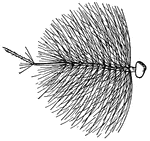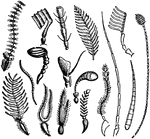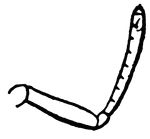Clipart tagged: ‘antenna’

Siro Americanus
"The typical genus of Sironidae. Two species inhabit Europe, one the Philippines, and another (undescribed)…
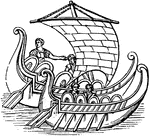
Antenna
"The yard of a ship. The ships of the ancients had a single mast in the middle, and a square sail, to…

Antenna
"The yard of a ship. The ships of the ancients had a single mast in the middle, and a square sail, to…
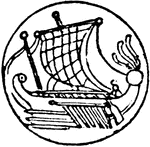
Antenna
"The yard of a ship. The ships of the ancients had a single mast in the middle, and a square sail, to…
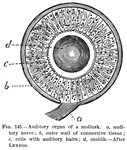
Auditory Organ
auditory organ of a mollusk. a, auditory nerve; b, outer wall of connective tissue; c, cells with auditory…

Honey Bee
"Head and Appendages of Honey-bee (Apis). a, Antenna or feeler. g, Epipharynx. mxp, Maxillary palp.…

Carrion Beetle
"Carrion-beetle (Silpha inaequalis). a, larva; d, same; f, g, h, mandible, labium, and maxilla of larva;…
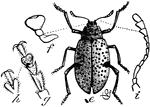
Fungus Beetle
Erotylus boisduvali, a fungus beetle. "e, beetle; f, palpus; g, tarsus, from below; h, terminal joint…

Long-Horned Beetle
"Elaphidion parallelum ... a, larva; b, twig split open, showing inclosed pupa; k, severed end of twig;…
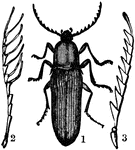
Serricorn Beetle
"1. A serricorn beetle (an elater). 2, 3. Englarged antennae of other serricorns (species of Phyllocerus…
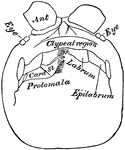
Centipede Head
"Head of Scolopendra, from below, showing the epilabrum, the protomala with its cardo (Card), and stipes…
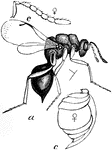
Female Chalcid Wasp
The female chalcid wasp (Eurytoma prunicola) is a parasitoid in the family Chalcididae.
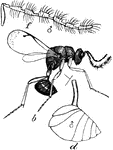
Male Chalcid Wasp
The male chalcid wasp (Eurytoma prunicola) is a parasitoid in the family Chalcididae.
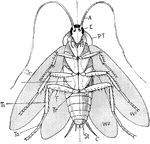
Cockroach
"Ventral aspect of male cockroach with the wings extended. An imaginary median line has been inserted.…
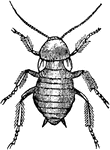
Female Cockroach
"A genus of Orthopterous insects, having an oval or orbicular flattened body, the head hidden beneath…

Male Cockroach
"A genus of Orthopterous insects, having an oval or orbicular flattened body, the head hidden beneath…
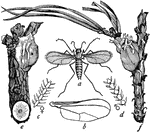
Resin Gnat
"Resin-gnat (Diplosis resinicola). a, adult female; b, wing of same; c, cross-section of antenna…

Norway Lobster Appendages
"Appendages of Norway lobster. Ex., Exopodite: En., endopodite; protopodite dark throughout; Ep., epipodite.…

Mosquito Head
"The head of female mosquito (culex). a, antenna; c, clypeus; h, hypopharynx; m, mandibles; ma., maxillas;…
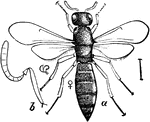
Scelio
Scelio is a genus of parasitic insects of the Proctotrypidae family. "Scelio famelicus. a, female; b,…


